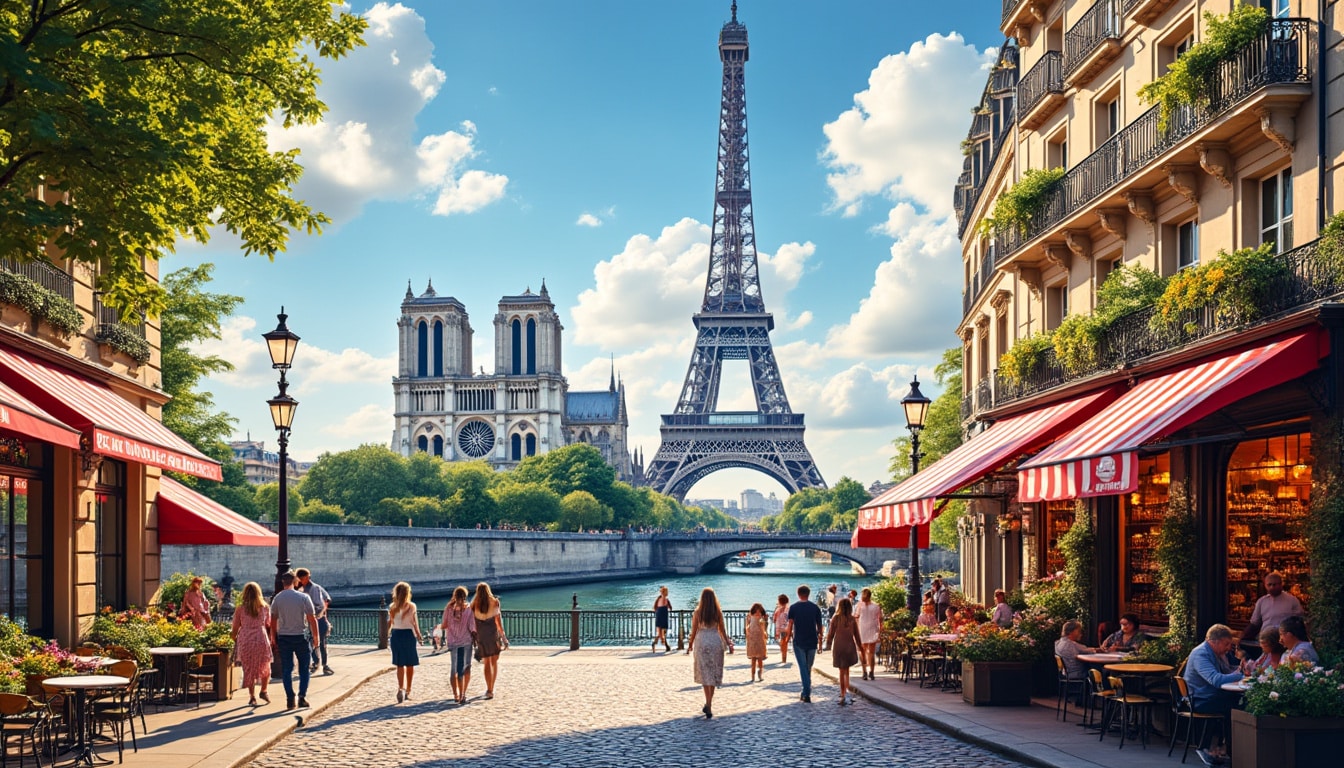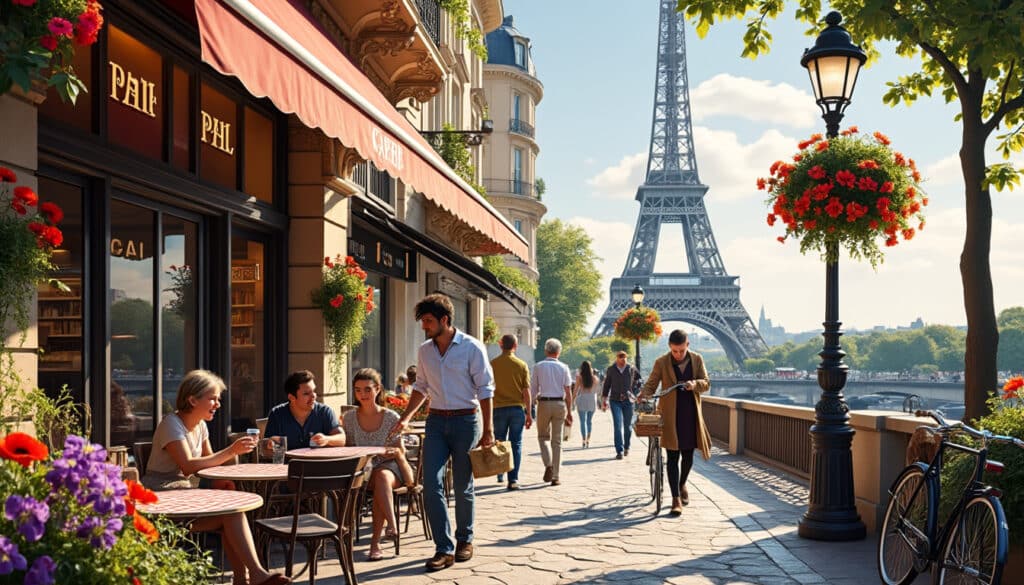Paris, the enchanting capital of France, is synonymous with architectural elegance, offering a tapestry of styles that narrates the story of the city’s evolution through the ages. From the towering Gothic structures to the refined lines of Haussmannian facades, each element in the Parisian skyline captures the spirit and values of its respective era. Beyond being mere buildings, these structures serve as masterpieces of their time, reflecting the cultural heartbeat of the “City of Light.” As visitors traverse the wide boulevards and narrow cobblestone streets, they embark on a visual journey through history, absorbing the innovation and artistry that define Paris’s urban landscape.
Medieval Foundations: The Gothic Legacy of Paris
The architectural voyage of Paris begins with its medieval roots, where the juxtaposition of Romanesque and Gothic styles laid a foundation for the city’s spiritual and cultural identity. One of the most outstanding examples from this era is the Notre-Dame Cathedral, a Gothic masterpiece whose construction commenced in the 12th century. Its pointed arches, ribbed vaults, and iconic gargoyles are testimonies to the medieval ambition of reaching towards the heavens. This architectural aspiration to blend beauty with purpose shines through every facet of the cathedral’s design.
Paris’s medieval architecture wasn’t solely defined by religious structures. The period also witnessed the emergence of fortified buildings, highlighting the importance of defense. Remnants of ancient fortifications, such as the Hôtel de Cluny, offer glimpses into a time when protection and piety coexisted. The medieval architecture of Paris represents the early societal priorities, vividly capturing a city driven by defense and faith.
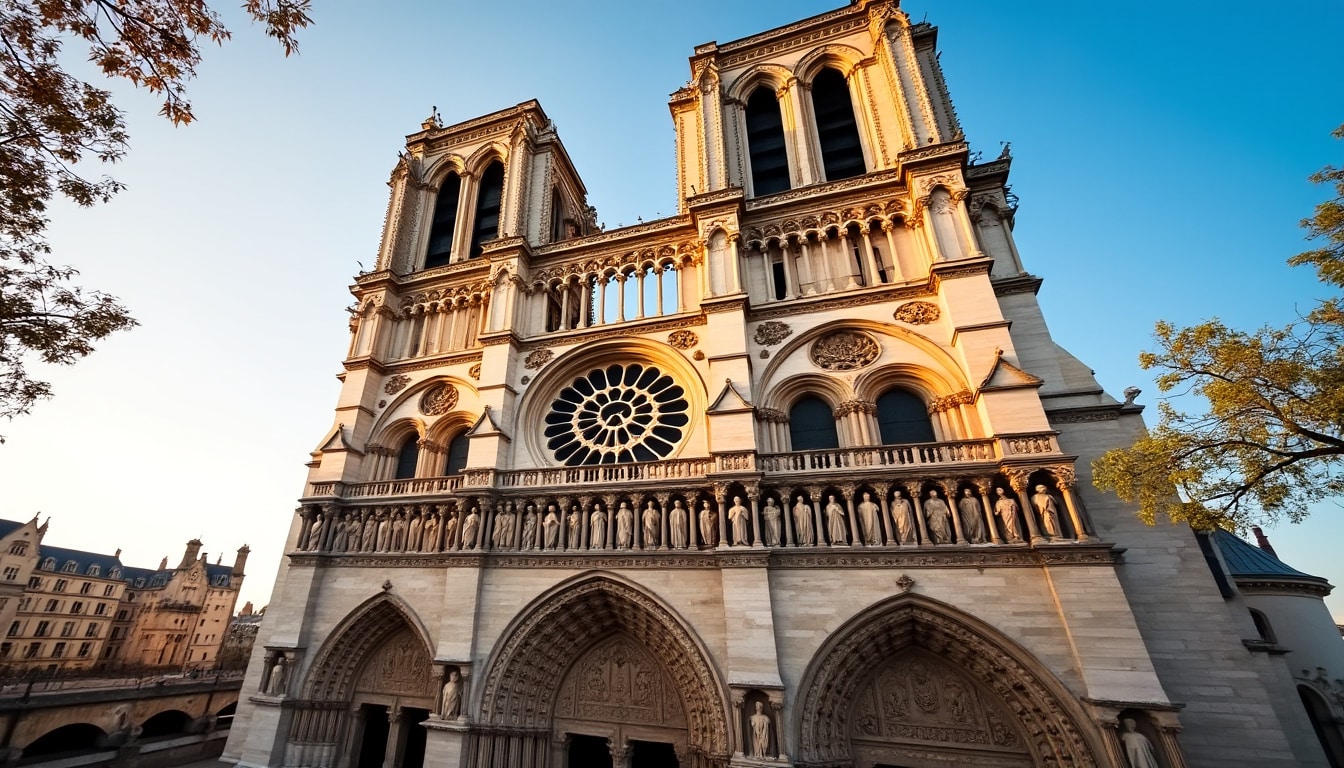
The Gothic Era: Architectural Marvels of Light and Verticality
The Gothic era unleashed a wave of architectural innovation, forever altering the Parisian skyline with its emphasis on height and light. This architectural style pushed the boundaries of engineering, resulting in ethereal structures that aimed to inspire awe. The Sainte-Chapelle, with its stunning stained glass windows, embodies the Gothic ideal of filtering divine light into sacred spaces.
Key innovations like flying buttresses and intricate tracery defined the Gothic architectural language, facilitating the construction of towering, open structures that honored natural light. These technical feats paved the way for a lasting legacy in Parisian design, symbolizing both religious devotion and architectural ingenuity. Paris’s Gothic landmarks are cherished as timeless achievements, offering insights into a period marked by both spiritual reverence and lofty ambition.
Renaissance and the Revival of Classical Beauty in Paris
The architecture of Paris witnessed a revolutionary transformation during the Renaissance, as classical ideals from Italy infused Parisian design with symmetry, proportion, and refinement. This shift heralded a move away from Gothic verticality towards balanced, geometric forms. The transformation of the Louvre Palace, from a medieval fortress to a grand royal residence, epitomizes this era’s architectural elegance. Decorative moldings and classical columns signaled a newfound appreciation for harmony and order.
This Renaissance influence extended beyond royal residences, infiltrating public buildings and establishing a Parisian style that would endure through future eras of classical revival. The period marked Paris’s ascent as a center for refined taste and architectural innovation, a legacy that is still appreciated by millions who visit the Louvre Museum annually to experience its cultural significance firsthand.
Echoes of Enlightenment: Baroque and Rococo Splendor
The 17th and 18th centuries ushered in the Baroque and Rococo periods, infusing Parisian architecture with opulence and complexity. Baroque architecture, revered for its grandeur and ornate details, is exemplified by the Palais Garnier opera house. Its grand staircase and detailed ceilings encapsulate the theatricality and decorative excess that characterized the Baroque style.
Rococo, a natural progression from Baroque, favored lighter tones and playful elegance, focusing heavily on interior design. The Hôtel de Soubise, with its delicate curves and pastel color schemes, showcases the whimsy and artistic mastery of Rococo. Together, these styles underscore the opulent lifestyle of the French aristocracy, leaving behind architectural landmarks that continue to captivate visitors.
Haussmann’s Vision: The Transformation of Paris
The mid-19th century marked a pivotal moment in Parisian urban history, leading to a dramatic overhaul under Baron Haussmann. Tasked by Napoleon III, Haussmann’s renovation endeavored to modernize Paris, introducing wide boulevards, harmonious facades, and uniform building heights. These elements have become synonymous with the city’s landscape, epitomized by grand avenues like the Champs-Élysées.
Haussmann’s projects were not just aesthetic; they improved air circulation, sanitation, and accessibility, creating a city tuned to modern needs. This era of transformation birthed the Haussmannian buildings that embody functional planning as well as architectural elegance. The enduring appeal of Haussmann’s work is evident in the harmonious balance it strikes between tradition and modernity, continuing to attract admiration globally.
Art Nouveau and Deco: The Burst of Creative Innovation
As the turn of the 20th century approached, Paris emerged as a nexus for the flourishing Art Nouveau and Art Deco movements, each adding eclectic dimensions to the city’s architectural identity. Art Nouveau, celebrated for its organic forms and nature-inspired details, finds representation in Hector Guimard’s Metro station entrances, noted for their sinuous lines and intricate floral patterns.
In contrast, the Art Deco style introduced a streamlined, geometric elegance that resonated with a modernist aesthetic. This movement emphasized symmetry and luxury materials, exemplified by the design of the Théâtre des Champs-Élysées. Together, these movements diversified the Parisian skyline, fostering a cityscape where creativity and design innovation continue to flourish.
The Role of Architecture in Defining Parisian Identity
Architecture is integral to Paris’s identity, acting as a tangible manifestation of the city’s historical, cultural, and societal values. Through its diverse buildings, ranging from medieval cathedrals to Haussmannian apartments, Paris collectively narrates a story that speaks to its global image. These structures highlight the city’s aesthetic pursuit of beauty and the resilience of its inhabitants, combining tradition with unyielding innovation.
The way people experience Paris is inherently linked to its architecture. Walking through the city is akin to journeying through time, with each era commemorated in its buildings’ stones and design. Paris draws millions yearly, inviting them to witness a city where history and modernity intertwine seamlessly. From marveling at the Eiffel Tower to contemplating the splendor of the Arc de Triomphe, visitors experience Paris as a living museum.
Comparative European Architecture: Paris versus Roma and London
The distinct architecture of Paris stands out even among European capitals, offering a unique blend of elegance and history that differentiates it from cities like London and Rome. While London thrives on a juxtaposition of Gothic revival and modernity, Paris remains committed to its cohesive skyline, a legacy of Haussmann’s urban planning. Rome, renowned for ancient ruins and Baroque significance, contrasts with Paris’s dedication to neoclassical and Renaissance styles.
Despite these differences, each city boasts a rich architectural identity. However, Paris’s remarkable integration of historical preservation and modern adaptation lends it a unique signature. The unity among its iconic structures, from the Musée d’Orsay to the modern Centre Pompidou, captivates and inspires an aesthetic cohesiveness that resonates globally.
Global Influence of Parisian Architecture
The architectural ethos of Paris has transcended national boundaries, inspiring global cities like New York and Tokyo. The Haussmannian model of uniform building lines and broad avenues has been a template for urban planners worldwide, who seek to modernize while maintaining aesthetic consistency. The iconic stature of the Palace of Versailles and the modern Louvre Pyramid have galvanized architectural trends, inspiring centuries of creators and cityscapes across continents.
Paris’s emphasis on form meeting function extends beyond buildings to impact urban planning and design worldwide. The city’s influence is felt in diverse realms, such as public art and fashion, establishing an enduring legacy that continually shapes global tastes and creative innovation. Whether in the sculptural forms of the Sacré-Cœur Basilica or the artistic flair of Montmartre, Paris’s architectural contributions resonate as global standards of aesthetic excellence.
FAQ
- 🙋 What are some of the most famous examples of Gothic architecture in Paris?
A: Iconic Gothic architecture includes the Notre-Dame Cathedral and Sainte-Chapelle, showcasing medieval design’s height and light principles. - 🏛️ How has Haussmann’s renovation impacted modern Paris?
A: Haussmann’s renovation introduced the now-famous wide boulevards and improved the city’s infrastructure, contributing significantly to modern Paris’s urban landscape. - 🌐 How does Parisian architecture influence other cities?
A: The Haussmannian design model and iconic structures like the Eiffel Tower and Louvre Pyramid inspire urban planning and innovation worldwide. - 🌍 What sets Parisian architecture apart from other European cities?
A: Paris’s cohesion between historical preservation and modern design, rooted in its commitment to aesthetic continuity, distinguishes it from other cities like London and Rome. - 🏙️ What styles characterize Art Nouveau and Art Deco in Paris?
A: Art Nouveau features organic, nature-inspired designs, while Art Deco emphasizes geometric elegance and luxury, both contributing distinct identities to Paris’s architectural narrative.
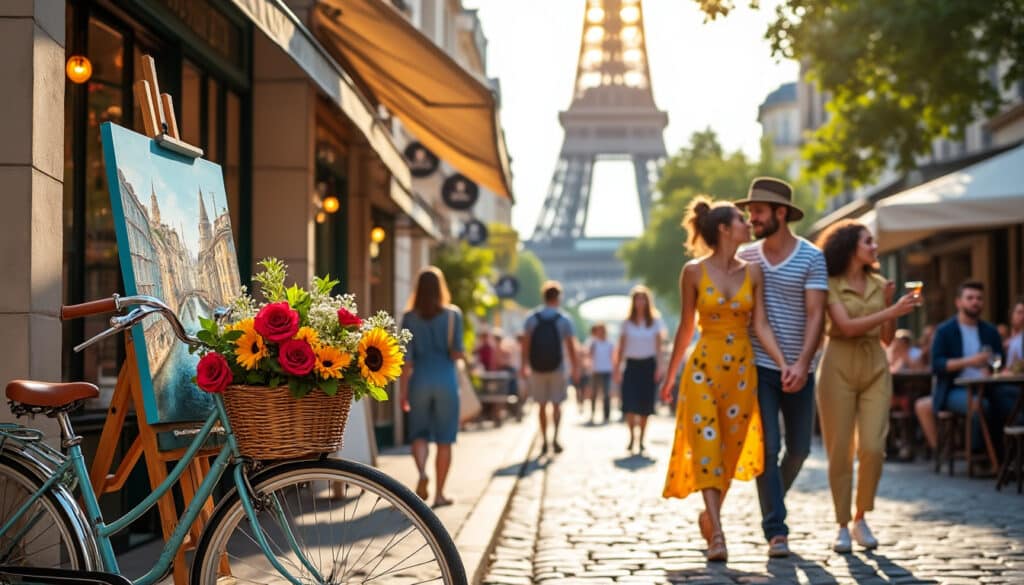
Fun Facts & Curiosities About Paris
Paris, often lauded as the City of Light, is famous for its iconic landmarks like the Eiffel Tower, Notre Dame Cathedral, and the Louvre Museum. Yet, there exists a treasure trove of fascinating facts and curious anecdotes that make Paris…

Paris, often referred to as the “City of Light,” is a metropolis that dazzles with its art, fashion, and history. Situated in the heart of France, it stands as a testament to centuries of cultural evolution. From the majestic silhouette…
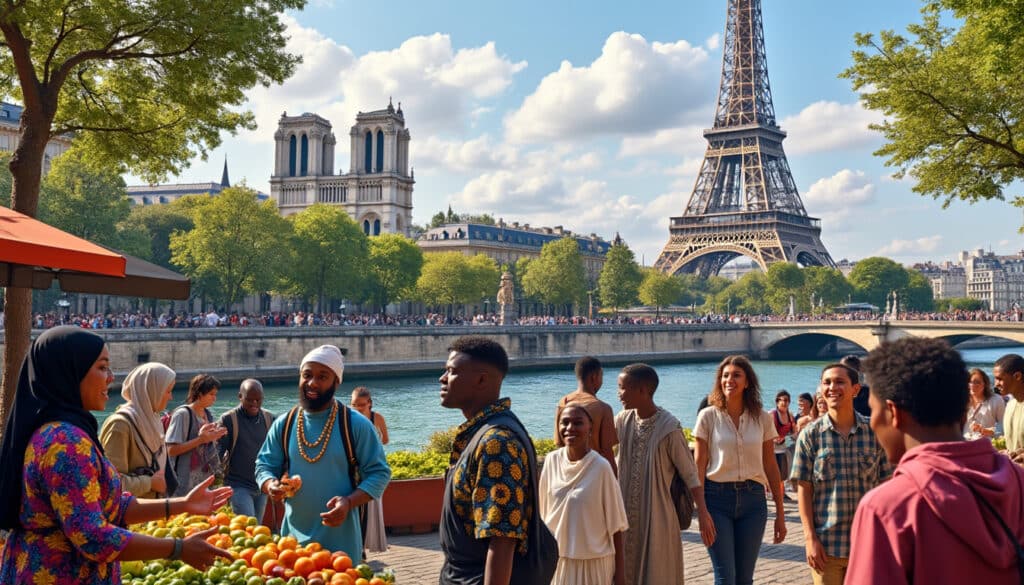
Demographics and geography of Paris
Paris, the City of Lights, is not just renowned for its breathtaking landmarks and artistic flair but also for its rich demographic tapestry and fascinating geography. The capital of France is a bustling metropolis that has seen significant transformations over…
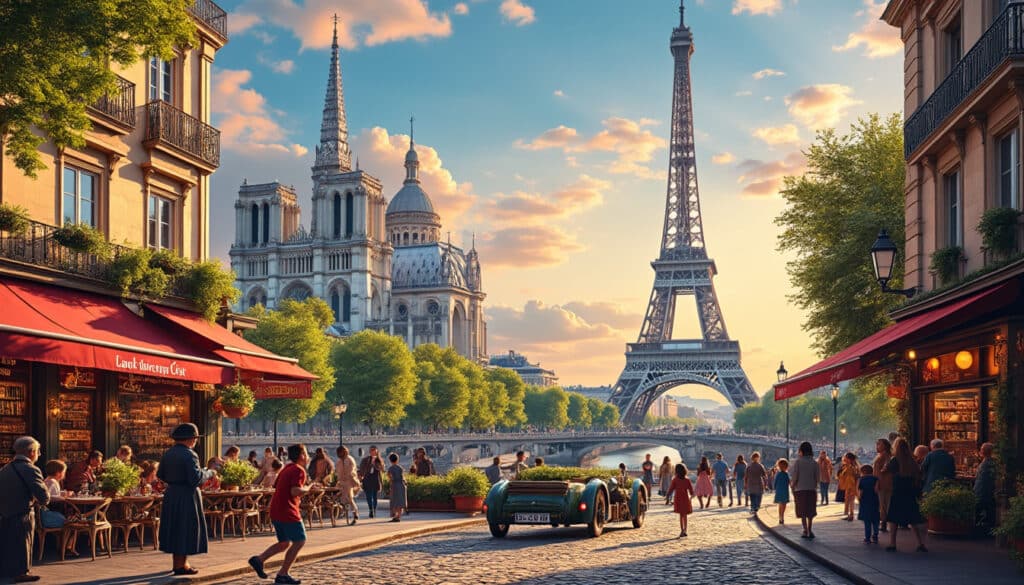
The History of Paris is a captivating tapestry woven from a myriad of cultures, historical events, and architectural marvels. From its origins as a Celtic settlement to becoming a global epicenter of art and politics, Paris has transformed profoundly over…
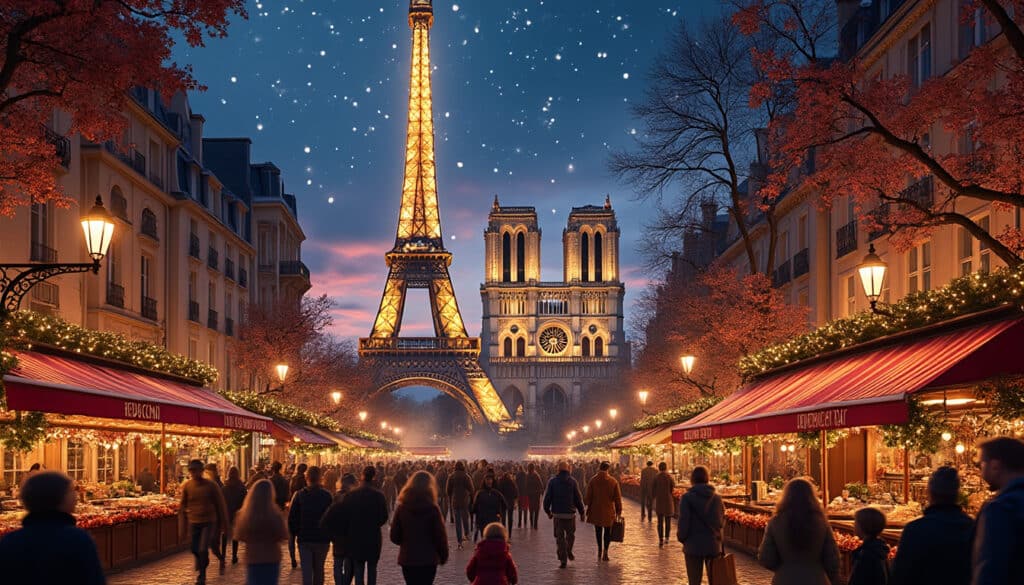
Holidays and celebrations in Paris
Paris, the City of Lights, is known for its rich history, vibrant culture, and iconic landmarks. But beyond the Louvre and the Eiffel Tower lies a tapestry of celebrations that bring the city to life throughout the year. From religious…
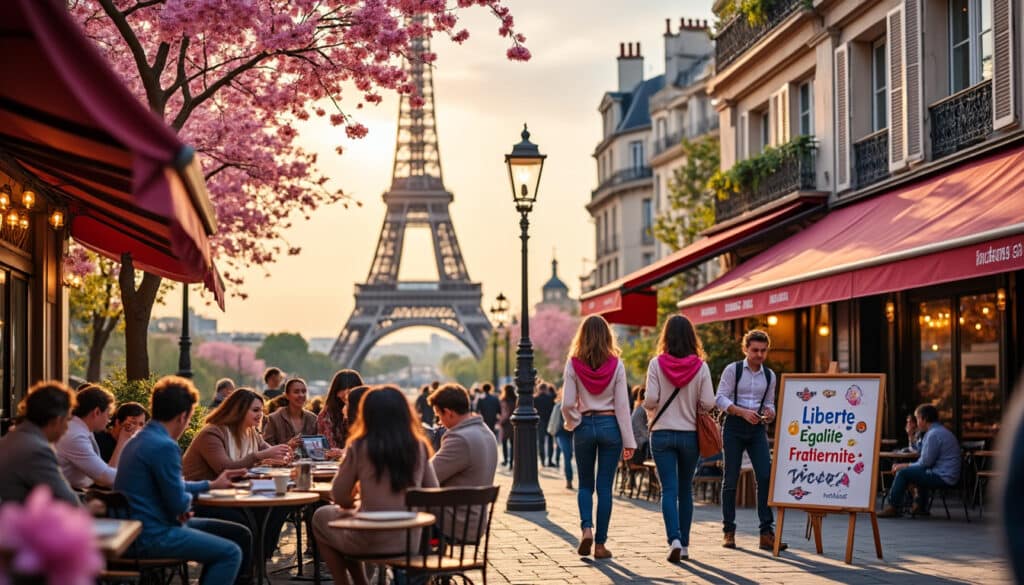
Language and spelling of Paris
Paris, the iconic City of Lights, is not only a hub for art, history, and fashion but also a melting pot of languages and cultures. For many travelers and expatriates, understanding the linguistic nuances of Paris is as essential as…
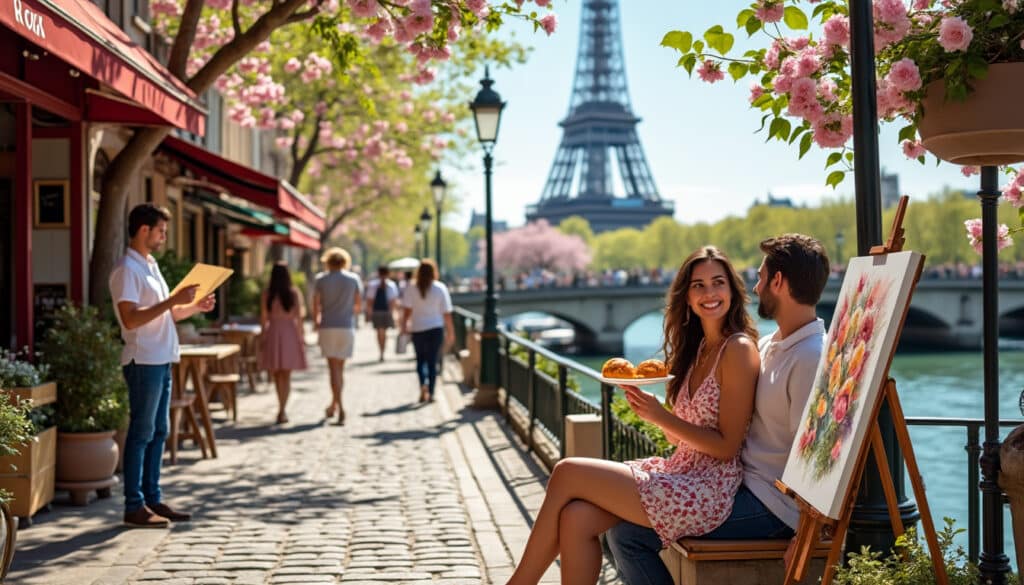
Local tips for tourists in Paris
Paris, often referred to as the “City of Light,” is a timeless destination that attracts millions of tourists every year. However, truly experiencing Paris as a local can unravel a different side of this enchanting city, one that is filled…
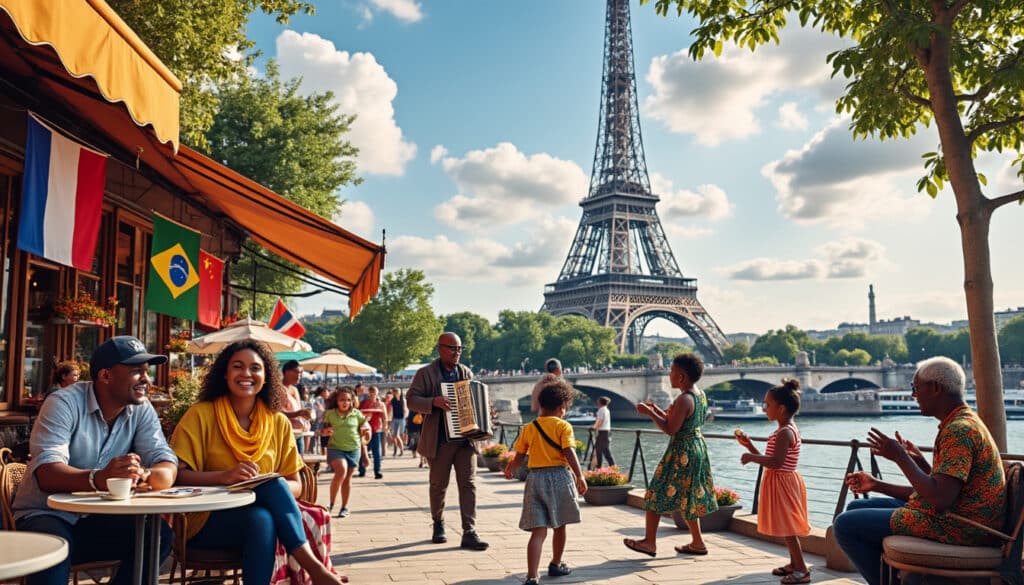
Names, flags, and identity of Paris
Paris, the City of Light, is not only celebrated for its iconic monuments such as the Eiffel Tower, but it is also a hub of cultural richness and historical depth that goes beyond its visual grandeur. From its age-old symbols…
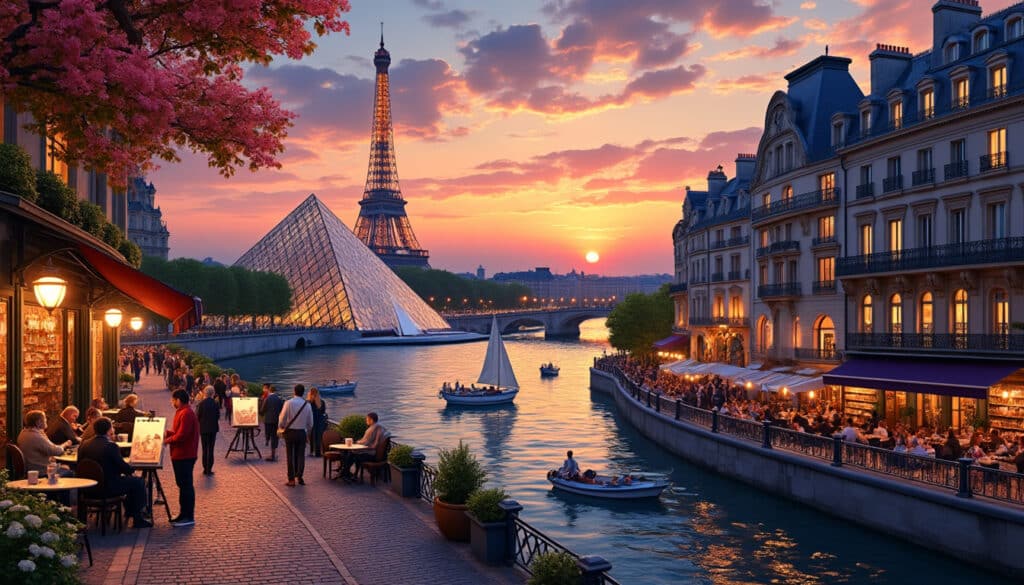
Reputation and identity of Paris
Paris, the illustrious capital of France, has long stood as a beacon of art, culture, and history, drawing millions of visitors annually who are captivated by its unique charm. Renowned as the “City of Light,” Paris is celebrated for its…
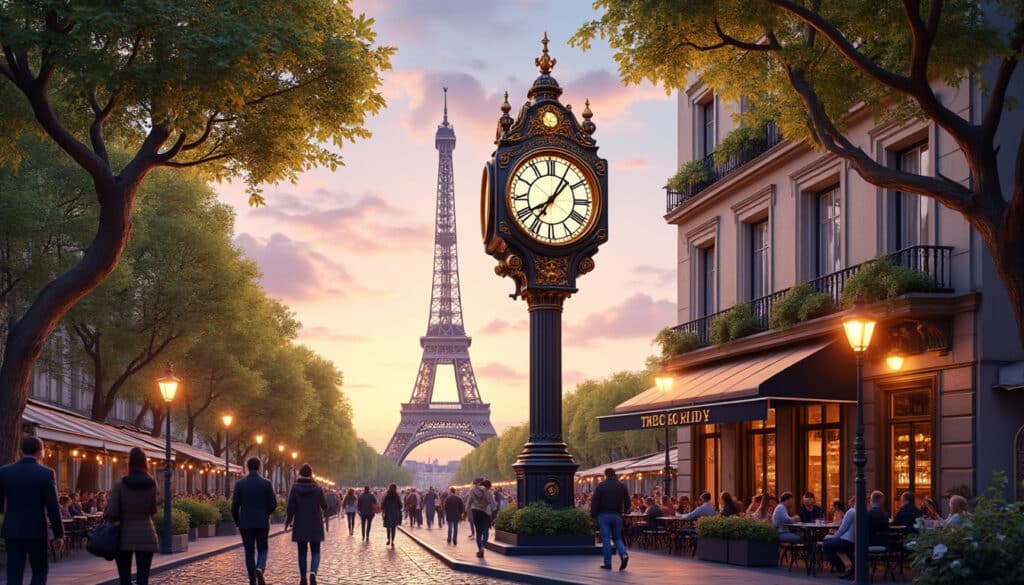
The vibrant city of Paris, France, is not only known for its rich culture, breathtaking architecture, and exquisite cuisine, but it also operates on a unique time schedule that visitors and residents must navigate. Understanding the time and time zone…
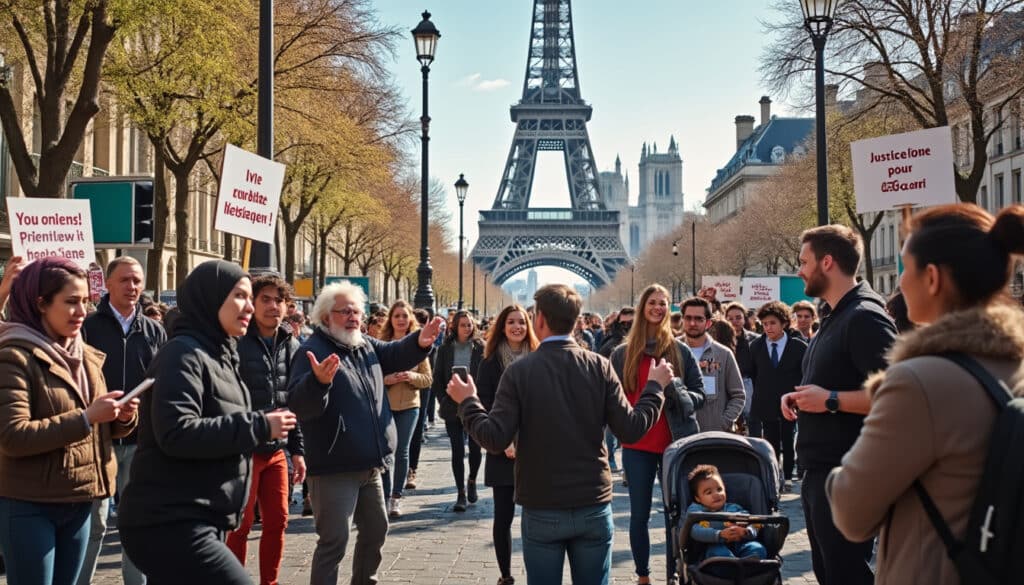
Unusual facts and social issues in Paris
Paris, with its timeless allure, is often depicted through its elegant boulevards, romantic cafes, and iconic landmarks like the Eiffel Tower. Yet, beneath this postcard-perfect exterior lies a tapestry of lesser-known stories and issues that paint a more complex portrait…
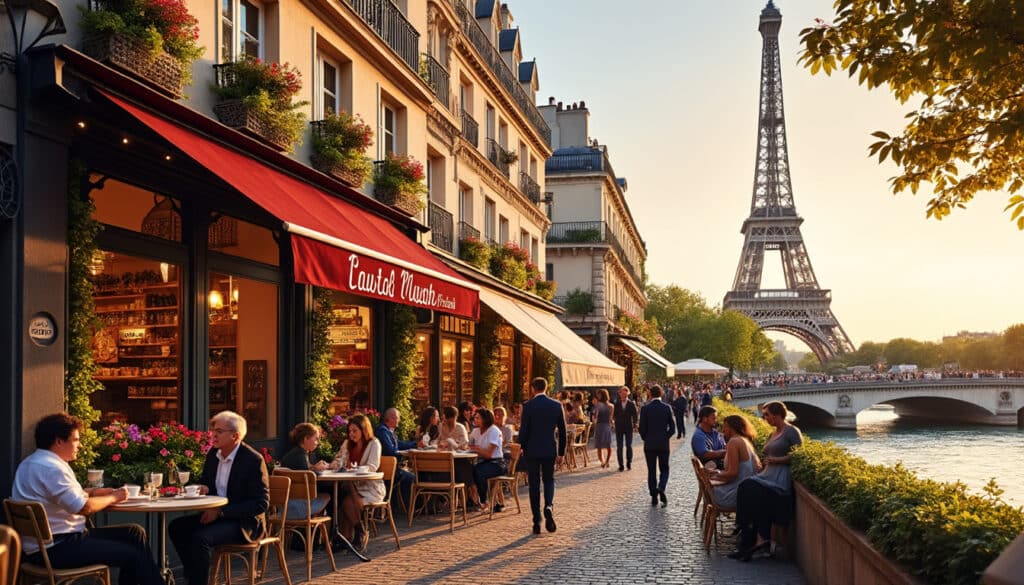
What does Paris look, smell, feel like?
Paris, often referred to as the “City of Light,” is renowned for its stunning architecture, rich history, and artistic heritage. This vibrant city is a haven for art enthusiasts and gastronomes alike. Its streets are lined with magnificent buildings, offering…

